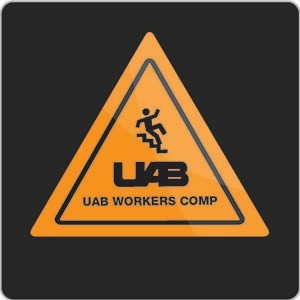

There’s an app for just about everything. And although a new workers’ compensation application from the University of Alabama at Birmingham may not be a must-add to every smart phone, its developers say it will be pretty handy for those who need it.

The workers’ comp app isn’t really an app — it’s more “app-like,” says Katey Watkins, UAB Health System e-marketing manager. “It’s really a mobile website that functions like an app, but it is less expensive and easier to design and create.”
Who needs a workers’ comp app? Any company that has a workers’ compensation claim, says Steve Canfield, UAB workers’ compensation liaison at the Workplace Occupational Health Clinic.
Canfield says there are hoops to jump through when an employee is injured on the job. The employee must get appropriate medical care, billing for that care must be sent to the appropriate insurance company, and drug and alcohol screens must be administered to the employee.
UAB has contracts with many local businesses to handle workers’ comp claims. An injury that occurs during normal business hours is straightforward. Employees are treated at the Workplace, UAB’s workers’ compensation headquarters, or at UAB or Highland hospitals.
The issues arise when an injury occurs during off-hours, nights or weekends.
“We needed a way to expedite patient care and provide better service to both patients and their employers,” says Canfield.
He said the mobile website allows a manager or supervisor to communicate directly via the Web with medical professionals at UAB Highlands or the Callahan Eye Foundation Hospital.
It’s a simple process. The manager downloads the app to a smart phone or computer desktop. When an injury occurs, the manager clicks on the icon and opens up a Web browser. They the manager fills out the fields on a form with patient information and details of the injury. The app sends the form as an e-mail to an emergency communications specialist, who relays information on the nature of the injury to the emergency department even as the patient is being transported. The specialists, who are paramedics, also are trained to administer drug and alcohol tests.
“The system ensures that the medical staff in the ED get accurate information about what to expect when the patient arrives,” says Canfield. “It makes sure the paperwork and claim forms follow the correct pathways, and it makes sure that drug and alcohol tests are done promptly and properly.”
Watkins and Marc Beaumont, director of e-marketing at UABHS, say it was their first foray into mobile applications. Because they used existing UAB platforms and firewalls, many of the complicated and expensive issues surrounding mobile apps were eliminated. Watkins says the design cost about $300 and took only a few weeks to create, whereas a full-fledged app can cost thousands of dollars and take months.
The somewhat tongue-in-cheek icon features a figure falling down a flight of stairs and was created in-house by graphic designer Billy Galyean.
The workers’ comp app can be accessed at www.uabmedicine.org/theworkplace.
Source: The University of Alabama at Birmingham (UAB) is a separate, independent institution from the University of Alabama, located in Tuscaloosa.